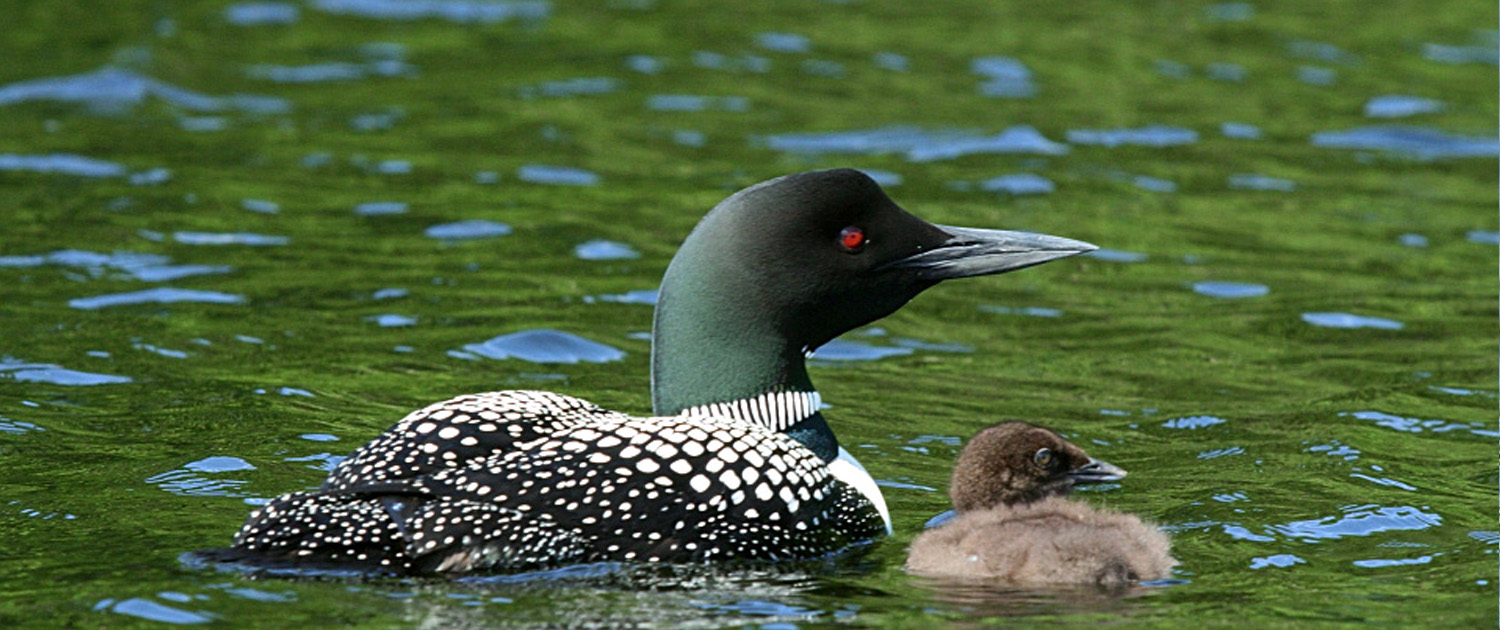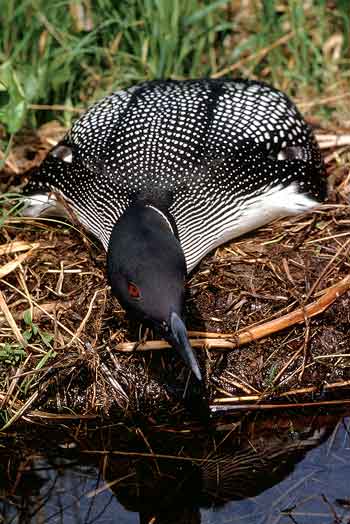Shoreline Development and Recreational Use of Lakes
Development and recreational pressures on lakes have been implicated in declines in numbers of breeding loons and in reduced loon breeding success. Several researchers suggest that shoreline development and associated recreational use of lakes play an important role in limiting loon populations, and might be the primary factors in the reduction of the loon’s historical breeding range.
New Hampshire is the fastest growing state in the northeast, and even marginal shoreline sites on many of our lakes are being developed or altered from their natural state. LPC is working to determine the effects of shoreline development and increasing human populations on the abundance and reproductive success of loons.



